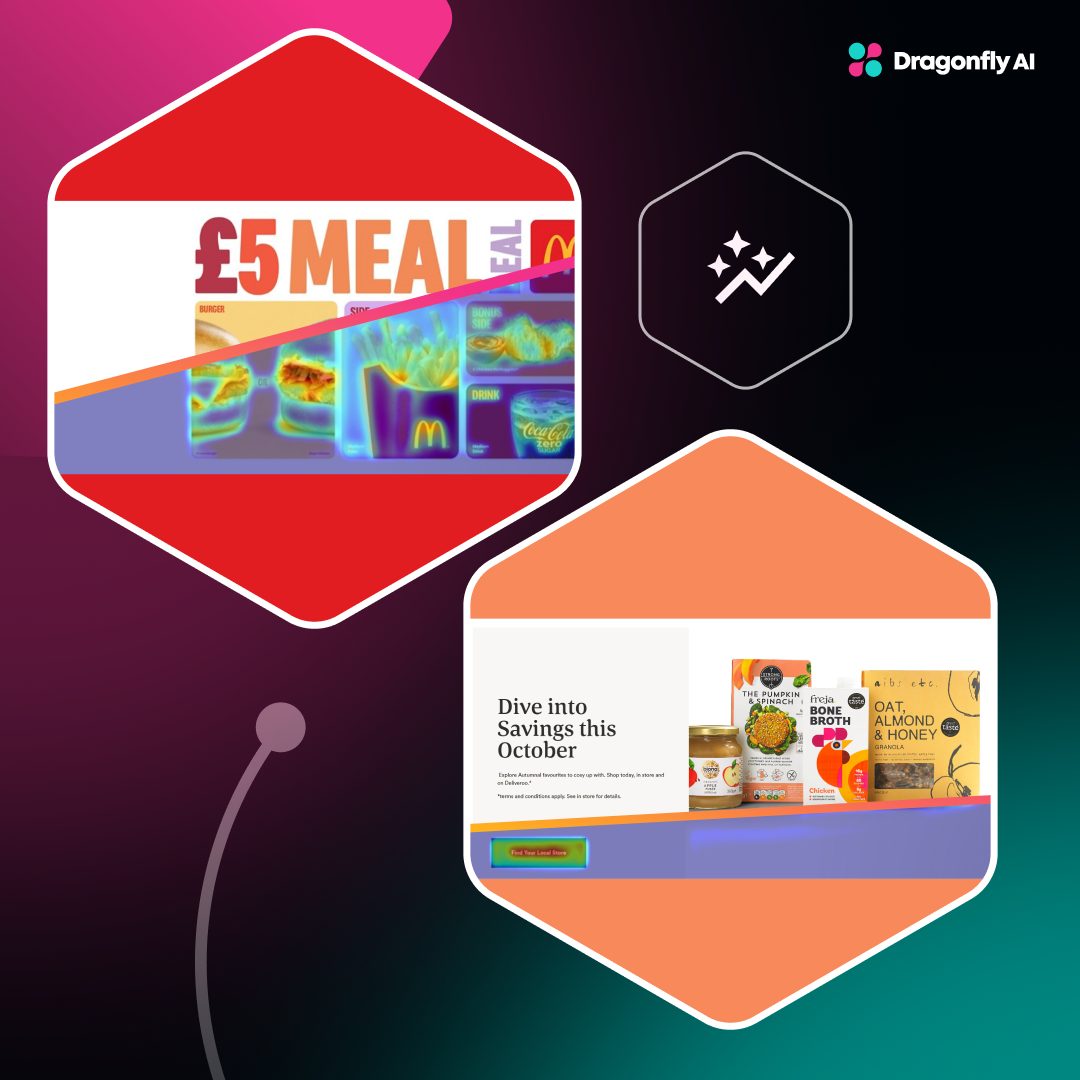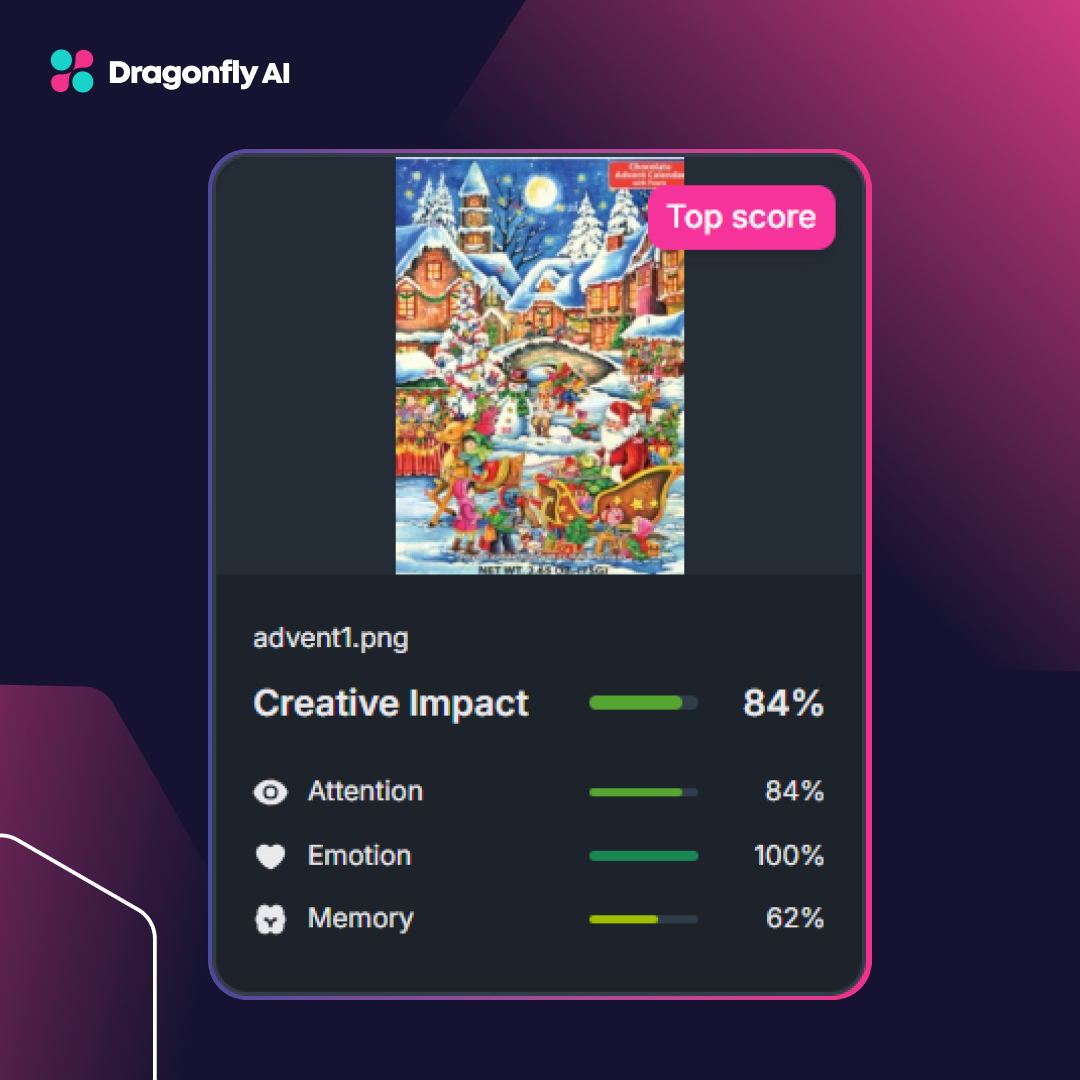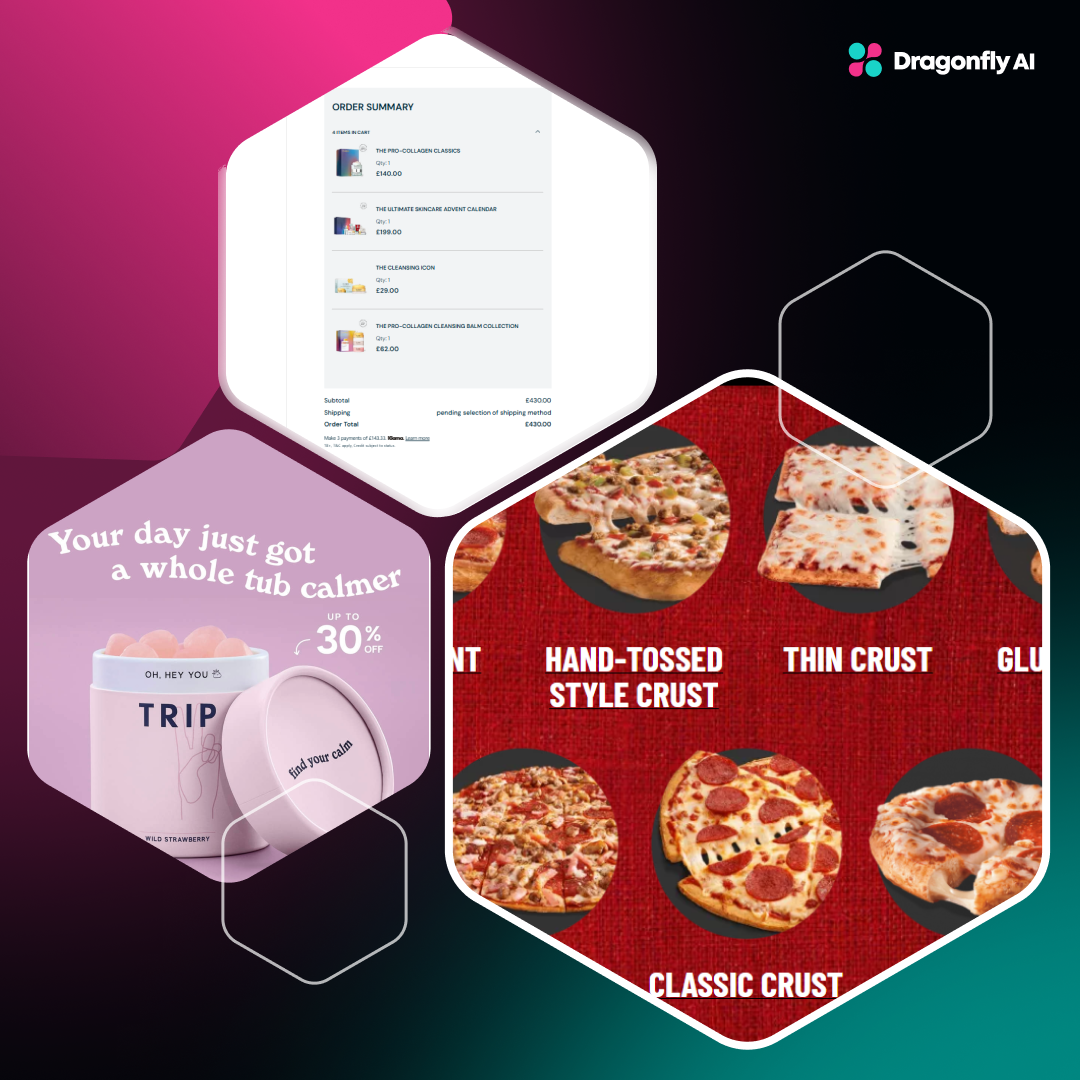In the shifting landscape of Consumer-Packaged Goods (CPG) advertising, where brands fiercely compete for consumers' attention, a new paradigm has emerged. Consumers are bombarded with a constant stream of information and options, and breaking through the noise becomes increasingly elusive. The age-old strategies that once sufficed now demand a transformative approach to engage and resonate with modern audiences.
This is where predictive analytics and personalization step into the spotlight. These innovative technologies are powerful tools that hold the key to unlocking the full potential of CPG advertising.
The Changing Landscape of CPG Advertising
Consumer expectations and behaviors are undergoing a profound transformation, reshaping the foundations of CPG advertising. Let's take a look at the forces at play in this evolving landscape:
Evolving Consumer Expectations
Today's consumers are more informed, discerning, and connected. They expect personalized, relevant content that speaks directly to their needs and desires. This shift in expectations has set a new standard for engagement and brand interaction.
The Rise of Personalization
To meet these heightened expectations, CPG brands must pivot towards a more personalized and data-driven approach. Personalization is the cornerstone of effective advertising in the digital era. Tailoring content to individual preferences and behaviors is essential for capturing and retaining audience attention.
Challenges of Traditional Methods
Traditional advertising methods, once the mainstay of CPG campaigns, now face significant challenges. Mass marketing approaches struggle to resonate with diverse and segmented audiences. The sheer volume of content and advertising noise in the digital space makes it difficult for brands to stand out.
Understanding Predictive Analytics
Predictive analytics utilizes historical and real-time data to forecast future trends, consumer behavior, and outcomes. Its primary role is to help businesses make informed and strategic decisions by identifying patterns, correlations, and hidden insights within data.
By analyzing vast data sets, predictive analytics identifies patterns and trends that might not be evident through traditional analysis. This data-driven approach empowers marketers to make proactive decisions, such as personalized product recommendations, precise targeting, and optimized ad placement, all of which contribute to more successful and efficient marketing campaigns.
The recent boom in AI means that predictive analytics takes on a multitude of approaches such as predicting attention, forecasting disruptions, streamlining inventory, illness detection, virtual assistants, and more.
When you think specifically of advertising it will be around tools such as; audience segmentation, testing, trend analysis, budget allocation, ad placement, and content personalization.
.png?width=1280&height=700&name=Blog%20image%203%20(2).png)
The Power of Personalization in CPG Advertising
Personalized marketing is all about tailoring content and offers to individual consumers based on their preferences, behaviors, and past interactions with a brand. This approach recognizes that one size does not fit all in today's diverse and dynamic consumer landscape.
For the CPG industry, personalization establishes relevance, builds connections, and increases connections.
There have been some incredible examples in the industry such as Coca-Cola’s campaign featuring labels with people’s names which increased sales and generated a buzz across social media.
Apart from increasing engagement, personalization also builds consumer experiences and increases conversions through improved customer satisfaction, higher conversion rates, and enhanced retention.
Breaking Barriers with Predictive Analytics
Predictive analytics has transformed the advertising landscape by enabling personalized advertising at scale, predicting consumer preferences, and eliminating ad wastage and inefficiency.
Personalized Advertising at Scale
Traditional advertising often employs a one-size-fits-all approach, leading to wasted ad spend. Predictive analytics leverages algorithms to analyze vast data sets. It creates detailed customer profiles that help advertisers understand consumer behavior, demographics, and online activity. Armed with this knowledge, advertisers craft highly personalized ads for individual consumers.
Predicting Consumer Preferences with Machine Learning
In advertising, machine learning algorithms predict consumer preferences by considering historical data, contextual factors, and external influences. By continuously learning from new data, machine learning algorithms can keep advertising relevant and engaging.
Breaking Down Barriers: Ad Wastage and Inefficiency
Traditional advertising faces two major challenges. Ad wastage occurs when ads reach disinterested consumers, while inefficiency arises when budgets are allocated to underperforming channels.
Predictive analytics tackles these issues by:
Precision Targeting:
Advertisers can target specific audience segments based on predictive insights, reducing wastage.
Campaign Optimization:
Machine learning algorithms monitor and adjust campaigns in real time, directing resources to more effective strategies.
Maximizing ROI:
By eliminating wastage and optimizing campaigns, predictive analytics helps advertisers get the most out of their budget.
Predictive analytics empowers advertisers to reach the right audience, predict consumer preferences, and eliminate ad wastage and inefficiency. As technology advances, advertisers leveraging predictive analytics gain a competitive edge in achieving their marketing goals.
Real-World Applications and Case Studies
Predictive analytics has emerged as a game-changer, enabling CPG brands to not only understand consumer preferences but also deliver tailored experiences that drive engagement and sales. Here are some real-world case studies showcasing how CPG brands have leveraged predictive analytics to transform their strategies.
Amazon: Revolutionizing Grocery Shopping with Amazon Fresh
Using predictive analytics, Amazon Fresh revolutionized the grocery shopping experience. They analyzed shopping histories, preferences, and even weather forecasts to predict what customers might need.
Measurable Results
- Amazon Fresh saw a substantial increase in grocery sales and customer loyalty.
- Delivery times were optimized based on demand predictions, leading to higher customer satisfaction.
- Cross-selling and upselling based on predictive analytics recommendations led to increased basket sizes.
Lessons Learned
-
Continuous improvement of predictive models is essential for maintaining accuracy.
-
Building customer trust is crucial, especially when dealing with sensitive consumer data.
.png?width=1280&height=786&name=Blog%20image%201%20(3).png)
Procter & Gamble (P&G): Personalizing Beauty Products
P&G used predictive analytics to tailor its product recommendations. By analyzing data on skin types, hair textures, and past purchases, they offered highly personalized product suggestions.
Measurable Results
- P&G experienced a significant increase in online sales and customer loyalty.
- Customer feedback and reviews highlighted the positive impact of personalized recommendations.
- Reduced returns and increased customer satisfaction contributed to higher profitability.
Lessons Learned
- Accurate data collection and cleaning processes are vital for effective personalization.
- Gathering feedback and adapting to changing preferences are crucial for maintaining relevance.
.png?width=1280&height=700&name=Blog%20image%202%20(2).png)
Overcoming Challenges and Implementation Strategies
Data is undeniably crucial, drowning in an excess of it can lead to analysis paralysis. The key here is to prioritize relevant, high-quality data sources that align with your advertising objectives. Quantity should not be mistaken for quality.
Another misconception is the expectation of 100% accuracy from predictive analytics. These tools offer valuable insights, but they are inherently probabilistic, not prophetic. Remember that the effectiveness of predictions is inherently tied to the quality of data and the algorithms behind them.
To overcome these challenges and successfully implement predictive analytics in CPG advertising, several strategies are critical. First and foremost, brands should establish clear advertising objectives. Whether the goal is to improve ROI, enhance customer retention, or optimize ad spend, having well-defined objectives is a guiding light in the journey.
Clean, accurate, and relevant data forms the foundation of any predictive analytics endeavor. It's essential to prioritize data hygiene to ensure that the insights generated are trustworthy and actionable.
Breaking down organizational silos is key. Collaboration across departments, including marketing, data science, and IT, is essential for harnessing the full potential of predictive analytics. This cross-functional approach not only enhances the quality of insights but also facilitates better decision-making.
Equally important, and perhaps more so in today's data-driven landscape, is the emphasis on data privacy and ethical considerations. Respecting customer privacy is non-negotiable. This involves clear communication of data usage policies, obtaining proper consent, and robust safeguards to protect sensitive information.
The future of CPG advertising is data-driven, ethical, and personalized, and those who embrace it will undoubtedly stay ahead of the curve.
The Future of CPG Advertising: Predictive Analytics and Beyond
CPG brands are increasingly delving into predictive analytics and AI to connect with modern consumers and maintain a competitive edge.
Moving beyond traditional demographic targeting, predictive analytics now explores psychographic and behavioral data. This means brands can understand their audience on a deeper level, considering their interests, preferences, and online behaviors. The result is advertising that resonates with customers.
AI-driven algorithms empower brands to analyze vast datasets rapidly, extracting invaluable insights. These insights underpin highly targeted campaigns, ensuring each consumer receives content crafted explicitly for them. This is the next level of personalization for advertising within CPG.
Brands that adapt gain a competitive edge in a marketplace that demands constant innovation. The future of CPG advertising is marked by data-driven precision, real-time responsiveness, and profound personalization—an era that places the consumer squarely at the heart of the experience.
Conclusion
Predictive analytics empowers CPG brands to escape the guesswork and uncertainty of traditional advertising. It offers the precision to make informed decisions, optimize campaigns in real time, and connect with consumers on a personal level. It's the tool that revolutionizes advertising strategies. Whilst personalization enables brands to engage with consumers authentically, addressing their unique needs and preferences.
CPG brands must embrace predictive analytics and personalization as transformative tools. These technologies are essential for staying competitive. They ensure brands remain agile, responsive, and deeply connected to their audience.


.png?width=1280&height=700&name=Blog%20image%203%20(2).png)
.png?width=1280&height=786&name=Blog%20image%201%20(3).png)
.png?width=1280&height=700&name=Blog%20image%202%20(2).png)
